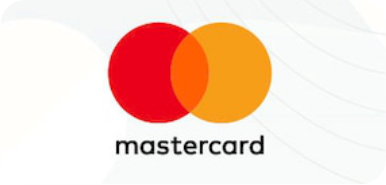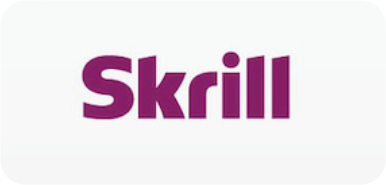Fibonacci (Fib) Retracement Tool in TradingView is one of the technical analysis tools used in analyzing price movements in financial markets. It is used to predict future trends as well as identify potential support and resistance levels. It is widely available on platforms like TradingView.
In this article, we will take into consideration the significance of the Fibonacci retracement tool, how to use it on TradingView, and why it should be an essential part of your trading strategy.
What are Fibonacci Retracement Tool?
The Fibonacci retracement tool helps traders predict potential market reversal points based on historical price movements. It uses a sequence of numbers called the Fibonacci sequence, named after Italian mathematician Leonardo Fibonacci. In this sequence, each number equals the sum of the two preceding ones, starting from 0 and 1.
This tool effectively identifies key turning points in the market. When the price retraces to a Fibonacci level, it either bounces off or breaks through. A bounce off a Fibonacci level signals strong support or resistance, while a breakout may indicate a continuing trend.
In trading, Fibonacci retracement levels derive from key Fibonacci numbers divided by others in the sequence. The most commonly used levels—23.6%, 38.2%, 50%, 61.8%, and 100%—help traders pinpoint areas where price corrections are likely.
On TradingView, you can easily access the Fibonacci retracement tool and apply it to any chart to visualize these critical levels.
How to Use the Fibonacci Retracement Tool on TradingView
TradingView makes it straightforward to use the Fibonacci retracement tool for both beginners and experienced traders. Here’s a simple guide to applying it on your TradingView chart:
- Select the Fibonacci Tool
First, open your chart on TradingView and look for the Fibonacci Retracement tool. It can be found in the drawing tools section, which is located on the left side of the screen. Once selected, you will be able to apply it to your chart.
- Identify the Trend
Before applying the tool, you need to identify the prevailing trend—whether it’s an uptrend or a downtrend. If you’re looking to use Fibonacci retracement on an uptrend, select the lowest point (the starting point of the uptrend) and drag the tool to the highest point (the peak of the uptrend). For a downtrend, do the reverse by selecting the highest point and dragging the tool to the lowest point.
- Adjust the Levels
Once applied, the Fibonacci tool will automatically generate the key retracement levels, but you can manually adjust the tool to ensure the levels are placed at the correct price points. You’ll see lines representing levels such as 23.6%, 38.2%, 50%, 61.8%, and 100%.
- Analyze the Retracement Levels
These Fibonacci levels act as potential support and resistance zones. If the price retraces and reaches one of these levels, it’s often a sign that the market could reverse or consolidate. Watch how the price behaves at each level to make more informed decisions.
- Set Alerts
TradingView allows you to set price alerts for specific Fibonacci levels. This feature helps you stay on top of the market movements and avoid missing potential opportunities.
Key Fibonacci Retracement Levels in Trading
The key Fibonacci retracement levels used in trading are based on the ratios derived from the Fibonacci sequence. These levels serve as important benchmarks to watch for potential trend changes, and they help traders make more confident decisions in the market. Some of the most commonly used levels are:
- 23.6%: This level represents the shallowest retracement and is often considered a minor retracement in the price movement. Many traders use it to spot the start of a trend reversal or continuation.
- 38.2%: The 38.2% level is considered a more significant retracement level. It is commonly used to identify potential reversals during both bullish and bearish trends.
- 50%: While not technically a Fibonacci ratio, the 50% level is widely used by traders as a major retracement level. It is based on the concept that markets often retrace about half of their prior movement before continuing the trend.
- 61.8%: This level is considered the most significant Fibonacci retracement level. Often referred to as the “golden ratio,” the 61.8% level is watched closely by traders, as it is seen as a major support or resistance zone in many market movements.
- 100%: The 100% level represents a full retracement, meaning the price has returned to its original starting point. A move beyond this level may signal a trend reversal or continuation, depending on the market context.
Benefits of Using Fibonacci Retracement in Trading
Using the Fibonacci retracement tool in your trading strategy has several advantages:
a. Identifying Key Support and Resistance Levels
Fibonacci levels can help you find crucial points where the price might reverse. When the price reaches one of these levels, it’s often a signal to act, either by entering a trade or taking profits.
b. Predicting Market Reversals
Fibonacci retracement levels are often used to predict where the price might reverse. This is especially useful for traders looking to enter the market during corrections or reversals rather than chasing the price during an uptrend or downtrend.
c. Improving Trade Entries and Exits
By incorporating Fibonacci retracement levels, you can identify better entry points and set more precise stop losses and take-profit levels. This enhances your risk management and overall profitability.
d. Integration with Other Indicators
Traders often combine the Fibonacci retracement tool with other technical indicators like Moving Averages, RSI (Relative Strength Index), and MACD (Moving Average Convergence Divergence). This multi-indicator approach increases the likelihood of successful trades by confirming signals from different sources.
Common Mistakes to Avoid When Using Fibonacci Retracement
While the Fibonacci retracement tool can be a powerful asset in your trading arsenal, there are several mistakes traders often make:
- Over-relying on Fibonacci AloneWhile Fibonacci levels are helpful, they should not be used in isolation. It is important to use them in conjunction with other indicators for a more comprehensive analysis.
- Forgetting to Adjust for Market ConditionsThe Fibonacci tool works best in trending markets. In sideways or choppy markets, it may not be as reliable. Always consider the overall market context before applying Fibonacci levels.
- Ignoring Risk ManagementEven though Fibonacci levels can help predict price movements, they are not foolproof. Never neglect your risk management strategy—always use stop losses and position sizes that align with your trading plan.
- Misplacing the ToolCorrectly placing the Fibonacci retracement tool is essential. Always make sure to place the tool at the correct points (the beginning and end of the trend) to ensure accurate levels.
- Not Adapting to Market ChangesMarkets are dynamic, and price movements can shift quickly. It’s important to continuously adjust your Fibonacci levels as the market evolves.
Conclusion
In summary, the Fibonacci (Fib) Retracement Tool in TradingView is very important when it comes to making informed decisions in the market. You can do so much by just understanding and applying the Fibonacci levels. From this concept, you can identify potential support and resistance zones, predict market reversals, make better trade entries and exits, and so on.
Remember, using Fibonacci retracement is not a guaranteed way to profit, but it offers significant insights into market behavior, especially when combined with other indicators and sound risk management practices. As you get more comfortable with the tool, rest assured you will be able to refine your strategy and improve your trading results.
Frequently Asked Questions (FAQs)
How do I use the Fibonacci tool on TradingView?
- Simply select the Fibonacci retracement tool from the drawing tools section, apply it to your chart by identifying the start and end points of a trend, and analyze the key retracement levels.
Is the Fibonacci retracement tool accurate?
- While Fibonacci retracement is a helpful tool for identifying key price levels, it’s important to use it in combination with other technical indicators and strategies for a more accurate analysis.
What are the key Fibonacci retracement levels?
- The key Fibonacci retracement levels are 23.6%, 38.2%, 50%, 61.8%, and 100%.
Can I use Fibonacci retracement in any market?
- Yes, Fibonacci retracement can be used in any market, including stocks, forex, and cryptocurrencies. However, it works best in trending markets.










